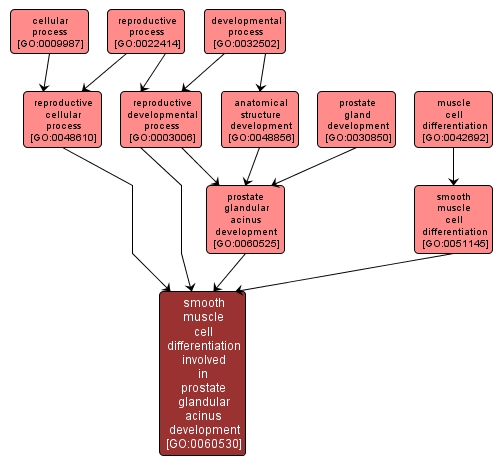GO TERM SUMMARY
|
| Name: |
smooth muscle cell differentiation involved in prostate glandular acinus development |
| Acc: |
GO:0060530 |
| Aspect: |
Biological Process |
| Desc: |
The process whereby a relatively unspecialized cell acquires specialized features of a smooth muscle cell of the prostate glandular acinus. |
|

|
INTERACTIVE GO GRAPH
|














